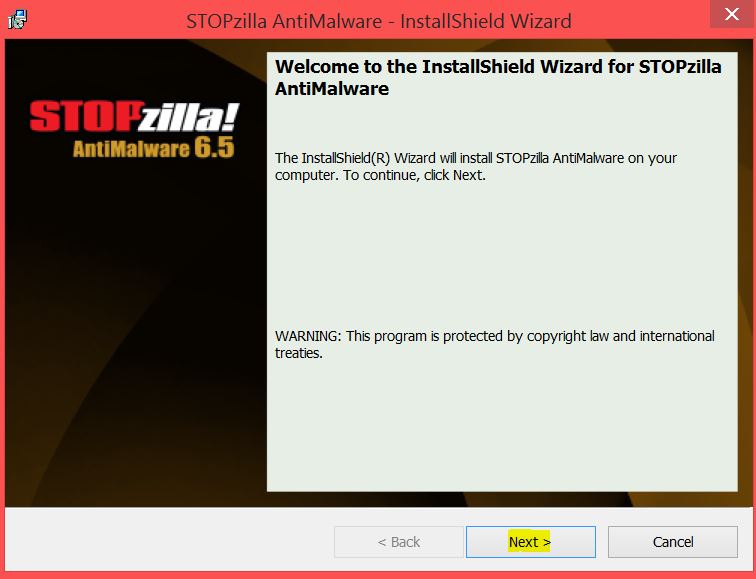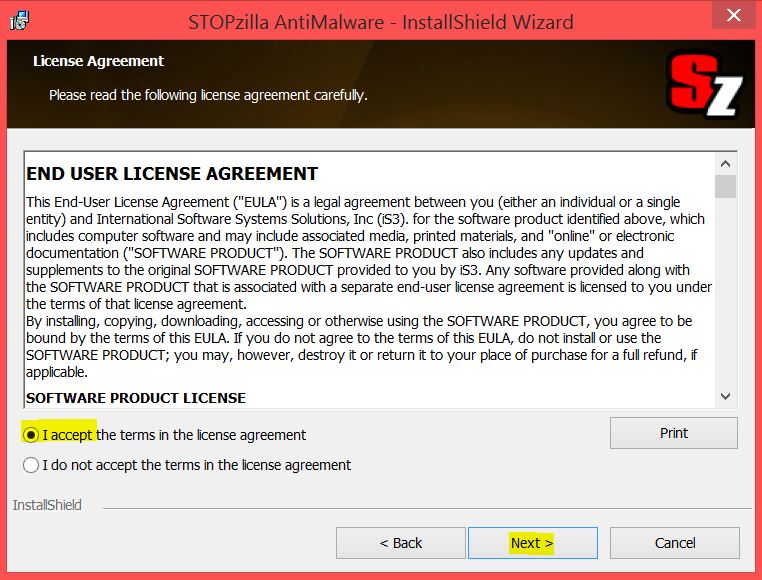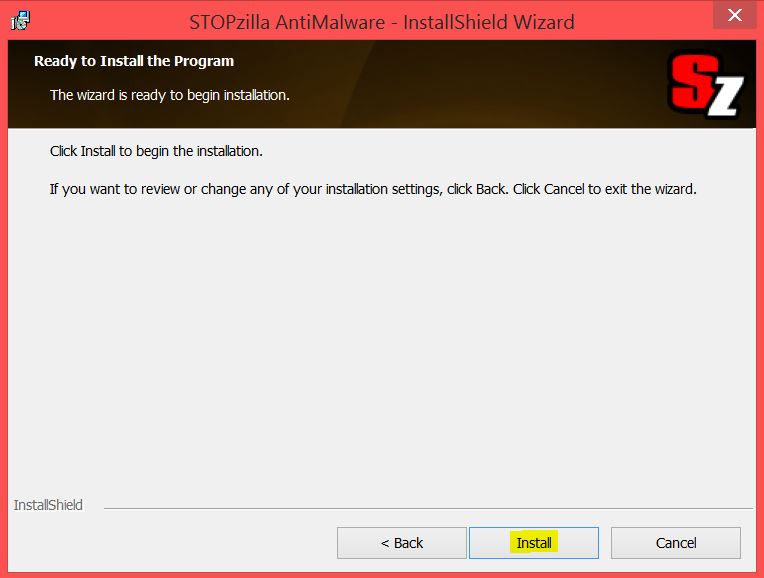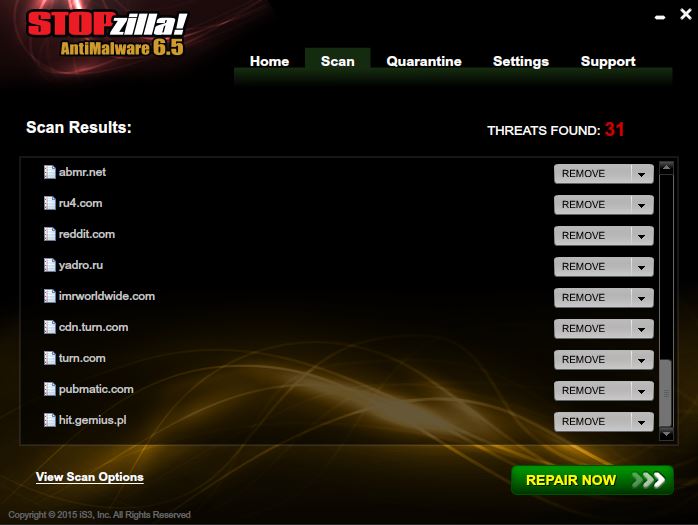 The fourth “installment” of TeslaCrypt is here to terrorize you and make your day a lot worse. The crypto-malware now uses significantly stronger encryption. Not only this, but TeslaCrypt 4 also has fixed bugs and is now able to encrypt files larger than 4 GB of memory without damaging them, unlike the 3rd version. The only two viable ways out for the user are if he pays the ransom or has a backup, preferably cloud backup. And it is strongly advisable not to pay the ransom money since it is no guarantee you will get the files back. Otherwise, experts strongly advise users use other alternative tools in case they are out of options.
The fourth “installment” of TeslaCrypt is here to terrorize you and make your day a lot worse. The crypto-malware now uses significantly stronger encryption. Not only this, but TeslaCrypt 4 also has fixed bugs and is now able to encrypt files larger than 4 GB of memory without damaging them, unlike the 3rd version. The only two viable ways out for the user are if he pays the ransom or has a backup, preferably cloud backup. And it is strongly advisable not to pay the ransom money since it is no guarantee you will get the files back. Otherwise, experts strongly advise users use other alternative tools in case they are out of options.
| Name | TeslaCrypt 4.0 |
| Type | Ransomware |
| Short Description | This malware encrypts the files on the infiltrated device without any extensions, rendering them corrupt. It asks the user to pay a relatively big amount of ransom money in BitCoin to decrypt the data. |
| Symptoms | The user may witness several files beginning with the name “RECOVERY” on his desktop which are the ransom notes. |
| Distribution Method | Via Angler Exploit Kit embedded in malicious web links that may be distributed via email or other spam. |
| Detection Tool | Download Malware Removal Tool, to See If Your System Has Been Affected by malware |
| User Experience | Join our forum to discuss TeslaCrypt 4.0. |
| Data Recovery Tool | Windows Data Recovery by Stellar Phoenix Notice! This product scans your drive sectors to recover lost files and it may not recover 100% of the encrypted files, but only few of them, depending on the situation and whether or not you have reformatted your drive. |
TeslaCrypt 4.0 – Distribution
TeslaCrypt is believed to use Angler type of exploit kit attacks to conduct its infections successfully. They are usually caused via malicious web links downloaded from several hosts. These are the domains that are believed to be the C&C (Command and Control centers of TeslaCrypt 4.0)
- https://esbook(.)com/phsys.php
- https://ebookstoreforyou(.)com/phsys.php
- https://shampooherbal(.)com/phsys.php
- https://commonsenseprotection(.)com/phsys.php
- https://exaltation(.)info/plugins/phsys.php
- https://hmgame(.)net/phsys.php
Web links associated with these very domain names are strongly believed to be widespread either via online referral spam on different websites or via spam emails. Once a user has clicked on the link, the exploit is activated without any hint of this occurrence. What is worse is that Virus Total scans indicate that the exploit kit based drive-by downloads result in very effective infiltration in systems, because they are well-obfuscated from antivirus software.
TeslaCrypt 4.0 In Detail
Once executed on your computer, TeslaCrypt 4.0 creates several different objects:
→ Files in %UserProfile%\
Desktop\RECOVER{randomly generated numbers and letters}.html
Desktop\RECOVER{randomly generated numbers and letters}.png
Desktop\RECOVER{randomly generated numbers and letters}.txt
Documents\{randomly generated numbers and letters}.exe
Documents\recover_file.txt
Registry value, created in HKCU\Software\Microsoft\Windows\CurrentVersion\Run\:
_{randomly generated name} C:\Windows\SYSTEM32\CMD.EXE /C START %UserProfile%\Documents\{randomly generated name}.exe
After creating the abovementioned files, the ransomware then may execute a reset of the computer of the user and activate the randomly named exe to scan for and may encrypt files with the following file extensions, similar to the 3.0 version of TeslaCrypt:
→ .ltx .bsa .apk .re4 .sav .lbf .slm .bik .epk .rgss3a .pak .big .unity3d .wotreplay .xxx .desc .py .m3u .flv .js .css .rb .png .jpeg .txt .p7c .p7b .p12 .pfx .pem .crt .cer .der .x3f sum .ibank .t13 .t12 .qdf .gdb .tax .pkpass .bc6 .bc7 .bkp .vtf .dazip .fpk .mlx .kf .iwd .vpk .tor .psk .rim .w3x .fsh .ntl .arch00 .lvl .snx .cfr .ff .vpp_pc .lrf .m2 .mcmeta .vfs0 .mpqge .kdb .db0 .DayZProfile .rofl .hkx .bar .upk .das .iwi .litemod .asset .forge .srw .pef .ptx .r3d .rw2 .rwl .raw .raf .orf .nrw .mrwref .mef .erf .kdc .dcr .cr2 .crw .bay .sr2 .srf .arw .3fr .dng .jpe .jpg .cdr .indd .ai .eps .pdf .pdd .psd .dbfv .mdf .wb2 .rtf .wpd .dxg .xf .dwg .pst .accdb .mdb .pptm .pptx .ppt .xlk .xlsb .xlsm .xlsx .xls .wps .docm .docx .doc .odb .odc .odm .odp .ods .odt . qic .bkf .sidn .sidd .mddata .itl .itdb .icxs .hvpl .hplg .hkdb .mdbackup .syncdb .gho .cas .svg .map .wmo .itm .sb .fos .mcgame .vdf .ztmp .sis .sid .ncf .menu .layout .dmp .blob .esm .001 7z .rar .m4a .wma .avi .wmv .csv .d3dbsp .sc2save .sie
Extensions source: Symantec
This particular version of TeslaCrypt then encrypts the files by possibly using an RSA-4096 encryption algorithm – one of the strongest in the world. It would take a lot of years to discover a password. The only hope for the user is to wait for a bug in the ransomware that will help discover the decryption keys.
After encrypting the files, the ransomware has been reported by one of our forum users to display the following ransom message:
→ “NOT YOUR LANGUAGE? USE https://translate.google.com
What’s the matter with your files?
Your data was secured using a strong encryption with RSA4096.
Use the link down below to find additional information on the encryption keys using RSA4096:https://en.wikipedia.org/wiki/RSA_(cryptosystem)
What exactly that means?
It means that on a structural level your files have been transformed. You won’t be able to use, read, see or work with them anymore.
In other words they are useless, however, there is a possibility to restore them with our help
What exactly happened to your files?
*** Two personal RSA4096 keys were generated for your PC/Laptop; one key is public, another key is private.
*** All your data and files were encrypted by the means of the public key, which you received over the web.
*** In order to decrypt your data and gain access to your computer you need a private key and a decryption software, which can be found on one of our secret servers.
What should you do next?
There are several options for you to consider:
1. You can wait for a while until the price of a private key will raise, so you will have to pay twice as much to access your files or
2. You can start getting BitCoins right now and get access to your data quite fast.
In case you have valuable files, we advise you to act fast as there is no other option rather than paying in order to get back your data.
In order to obtain specific instructions, please access your personal homepage by choosing one of the few addresses down below:
https:// h5nuwefkuh134ljngkasdbasfg(.)corolbugan(.)com/17E035F219B34F9
https:// p54dhkus4tlkfashdb6vjetgsdfg(.)greetingshere(.)at/17E035F219B34F9
https:// f4dsbjhb45wfiuqeib4fkqeg(.)meccaledgy(.)at/17E035F219B34F9
If you can’t access your personal homepage or the addresses are not working, complete the following steps:
1 Download TOR Browser – https:// www(.)torproject(.)org/projects/torbrowser(.)html(.)en
2 Install TOR Browser
3 Open TOR Browser
4 Insert the following link in the address bar: k7tlx3ghr3m4n2tu(.)onion/17E035F219B34F9
5 Follow the steps on your screen
IMPORTANT INFORMATION
Your personal homepages:
https:// h5nuwefkuh134ljngkasdbasfg(.)corolbugan(.)com/17E031234F9
https:// p54dhkus4tlkfashdb6vjetgsdfg(.)greetingshere(.)at/17E092134F9
https:// f4dsbjhb45wfiuqeib4fkqeg(.)meccaledgy(.)at/17E09213F9
Your personal page Tor-Browser k7tlx3ghr3m4n2tu(.)onion/17E09B34F9
Your personal identification ID: 1812EN2DF9″
Remove TeslaCrypt 4.0 and Restore the Data
For the removal of TeslaCrypt, it is strongly advisable to follow the methodologically arranged steps in the removal instructions below. They include scanning your computer for TeslaCrypt 4 and the exploit kit which is used to infect your computer. After removal, we strongly advise you to use cloud backup or external drive to protect your data in the future.
If you wish to restore your files, and you do not have backup or Volume Shadow Copies set up on your computer, we advise using the alternative methods illustrated in Step “4. Restore Files Encrypted by TeslaCrypt 4.0”. They are not 100% effective, and there is no guarantee that you will restore your files in good condition, but some of our forum users claim they managed to restore some of their data, and they claim it was intact. If you use data recovery software method, we advise you NOT to reinstall Windows or format your hard/solid drive because it may wipe every chance of file restoration by clearing the sectors of the drive.
- Step 1
- Step 2
- Step 3
- Step 4
- Step 5
Step 1: Scan for TeslaCrypt 4.0 with SpyHunter Anti-Malware Tool



Ransomware Automatic Removal - Video Guide
Step 2: Uninstall TeslaCrypt 4.0 and related malware from Windows
Here is a method in few easy steps that should be able to uninstall most programs. No matter if you are using Windows 10, 8, 7, Vista or XP, those steps will get the job done. Dragging the program or its folder to the recycle bin can be a very bad decision. If you do that, bits and pieces of the program are left behind, and that can lead to unstable work of your PC, errors with the file type associations and other unpleasant activities. The proper way to get a program off your computer is to Uninstall it. To do that:


 Follow the instructions above and you will successfully delete most unwanted and malicious programs.
Follow the instructions above and you will successfully delete most unwanted and malicious programs.
Step 3: Clean any registries, created by TeslaCrypt 4.0 on your computer.
The usually targeted registries of Windows machines are the following:
- HKEY_LOCAL_MACHINE\Software\Microsoft\Windows\CurrentVersion\Run
- HKEY_CURRENT_USER\Software\Microsoft\Windows\CurrentVersion\Run
- HKEY_LOCAL_MACHINE\Software\Microsoft\Windows\CurrentVersion\RunOnce
- HKEY_CURRENT_USER\Software\Microsoft\Windows\CurrentVersion\RunOnce
You can access them by opening the Windows registry editor and deleting any values, created by TeslaCrypt 4.0 there. This can happen by following the steps underneath:


 Tip: To find a virus-created value, you can right-click on it and click "Modify" to see which file it is set to run. If this is the virus file location, remove the value.
Tip: To find a virus-created value, you can right-click on it and click "Modify" to see which file it is set to run. If this is the virus file location, remove the value.
Before starting "Step 4", please boot back into Normal mode, in case you are currently in Safe Mode.
This will enable you to install and use SpyHunter 5 successfully.
Step 4: Boot Your PC In Safe Mode to isolate and remove TeslaCrypt 4.0





Step 5: Try to Restore Files Encrypted by TeslaCrypt 4.0.
Method 1: Use STOP Decrypter by Emsisoft.
Not all variants of this ransomware can be decrypted for free, but we have added the decryptor used by researchers that is often updated with the variants which become eventually decrypted. You can try and decrypt your files using the instructions below, but if they do not work, then unfortunately your variant of the ransomware virus is not decryptable.
Follow the instructions below to use the Emsisoft decrypter and decrypt your files for free. You can download the Emsisoft decryption tool linked here and then follow the steps provided below:
1 Right-click on the decrypter and click on Run as Administrator as shown below:

2. Agree with the license terms:

3. Click on "Add Folder" and then add the folders where you want files decrypted as shown underneath:

4. Click on "Decrypt" and wait for your files to be decoded.

Note: Credit for the decryptor goes to Emsisoft researchers who have made the breakthrough with this virus.
Method 2: Use data recovery software
Ransomware infections and TeslaCrypt 4.0 aim to encrypt your files using an encryption algorithm which may be very difficult to decrypt. This is why we have suggested a data recovery method that may help you go around direct decryption and try to restore your files. Bear in mind that this method may not be 100% effective but may also help you a little or a lot in different situations.
Simply click on the link and on the website menus on the top, choose Data Recovery - Data Recovery Wizard for Windows or Mac (depending on your OS), and then download and run the tool.
TeslaCrypt 4.0-FAQ
What is TeslaCrypt 4.0 Ransomware?
TeslaCrypt 4.0 is a ransomware infection - the malicious software that enters your computer silently and blocks either access to the computer itself or encrypt your files.
Many ransomware viruses use sophisticated encryption algorithms to make your files inaccessible. The goal of ransomware infections is to demand that you pay a ransom payment to get access to your files back.
What Does TeslaCrypt 4.0 Ransomware Do?
Ransomware in general is a malicious software that is designed to block access to your computer or files until a ransom is paid.
Ransomware viruses can also damage your system, corrupt data and delete files, resulting in the permanent loss of important files.
How Does TeslaCrypt 4.0 Infect?
Via several ways.TeslaCrypt 4.0 Ransomware infects computers by being sent via phishing emails, containing virus attachment. This attachment is usually masked as an important document, like an invoice, bank document or even a plane ticket and it looks very convincing to users.
Another way you may become a victim of TeslaCrypt 4.0 is if you download a fake installer, crack or patch from a low reputation website or if you click on a virus link. Many users report getting a ransomware infection by downloading torrents.
How to Open .TeslaCrypt 4.0 files?
You can't without a decryptor. At this point, the .TeslaCrypt 4.0 files are encrypted. You can only open them once they are decrypted using a specific decryption key for the particular algorithm.
What to Do If a Decryptor Does Not Work?
Do not panic, and backup the files. If a decryptor did not decrypt your .TeslaCrypt 4.0 files successfully, then do not despair, because this virus is still new.
Can I Restore ".TeslaCrypt 4.0" Files?
Yes, sometimes files can be restored. We have suggested several file recovery methods that could work if you want to restore .TeslaCrypt 4.0 files.
These methods are in no way 100% guaranteed that you will be able to get your files back. But if you have a backup, your chances of success are much greater.
How To Get Rid of TeslaCrypt 4.0 Virus?
The safest way and the most efficient one for the removal of this ransomware infection is the use a professional anti-malware program.
It will scan for and locate TeslaCrypt 4.0 ransomware and then remove it without causing any additional harm to your important .TeslaCrypt 4.0 files.
Can I Report Ransomware to Authorities?
In case your computer got infected with a ransomware infection, you can report it to the local Police departments. It can help authorities worldwide track and determine the perpetrators behind the virus that has infected your computer.
Below, we have prepared a list with government websites, where you can file a report in case you are a victim of a cybercrime:
Cyber-security authorities, responsible for handling ransomware attack reports in different regions all over the world:
Germany - Offizielles Portal der deutschen Polizei
United States - IC3 Internet Crime Complaint Centre
United Kingdom - Action Fraud Police
France - Ministère de l'Intérieur
Italy - Polizia Di Stato
Spain - Policía Nacional
Netherlands - Politie
Poland - Policja
Portugal - Polícia Judiciária
Greece - Cyber Crime Unit (Hellenic Police)
India - Mumbai Police - CyberCrime Investigation Cell
Australia - Australian High Tech Crime Center
Reports may be responded to in different timeframes, depending on your local authorities.
Can You Stop Ransomware from Encrypting Your Files?
Yes, you can prevent ransomware. The best way to do this is to ensure your computer system is updated with the latest security patches, use a reputable anti-malware program and firewall, backup your important files frequently, and avoid clicking on malicious links or downloading unknown files.
Can TeslaCrypt 4.0 Ransomware Steal Your Data?
Yes, in most cases ransomware will steal your information. It is a form of malware that steals data from a user's computer, encrypts it, and then demands a ransom in order to decrypt it.
In many cases, the malware authors or attackers will threaten to delete the data or publish it online unless the ransom is paid.
Can Ransomware Infect WiFi?
Yes, ransomware can infect WiFi networks, as malicious actors can use it to gain control of the network, steal confidential data, and lock out users. If a ransomware attack is successful, it could lead to a loss of service and/or data, and in some cases, financial losses.
Should I Pay Ransomware?
No, you should not pay ransomware extortionists. Paying them only encourages criminals and does not guarantee that the files or data will be restored. The better approach is to have a secure backup of important data and be vigilant about security in the first place.
What Happens If I Don't Pay Ransom?
If you don't pay the ransom, the hackers may still have access to your computer, data, or files and may continue to threaten to expose or delete them, or even use them to commit cybercrimes. In some cases, they may even continue to demand additional ransom payments.
Can a Ransomware Attack Be Detected?
Yes, ransomware can be detected. Anti-malware software and other advanced security tools can detect ransomware and alert the user when it is present on a machine.
It is important to stay up-to-date on the latest security measures and to keep security software updated to ensure ransomware can be detected and prevented.
Do Ransomware Criminals Get Caught?
Yes, ransomware criminals do get caught. Law enforcement agencies, such as the FBI, Interpol and others have been successful in tracking down and prosecuting ransomware criminals in the US and other countries. As ransomware threats continue to increase, so does the enforcement activity.
About the TeslaCrypt 4.0 Research
The content we publish on SensorsTechForum.com, this TeslaCrypt 4.0 how-to removal guide included, is the outcome of extensive research, hard work and our team’s devotion to help you remove the specific malware and restore your encrypted files.
How did we conduct the research on this ransomware?
Our research is based on an independent investigation. We are in contact with independent security researchers, and as such, we receive daily updates on the latest malware and ransomware definitions.
Furthermore, the research behind the TeslaCrypt 4.0 ransomware threat is backed with VirusTotal and the NoMoreRansom project.
To better understand the ransomware threat, please refer to the following articles which provide knowledgeable details.
As a site that has been dedicated to providing free removal instructions for ransomware and malware since 2014, SensorsTechForum’s recommendation is to only pay attention to trustworthy sources.
How to recognize trustworthy sources:
- Always check "About Us" web page.
- Profile of the content creator.
- Make sure that real people are behind the site and not fake names and profiles.
- Verify Facebook, LinkedIn and Twitter personal profiles.


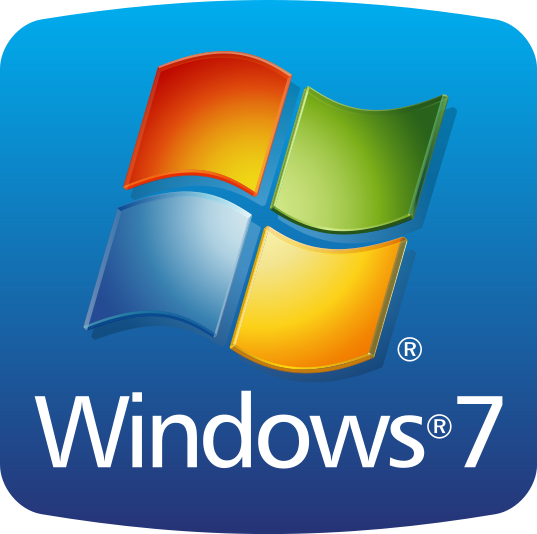 1. For Windows 7,XP and Vista.
1. For Windows 7,XP and Vista.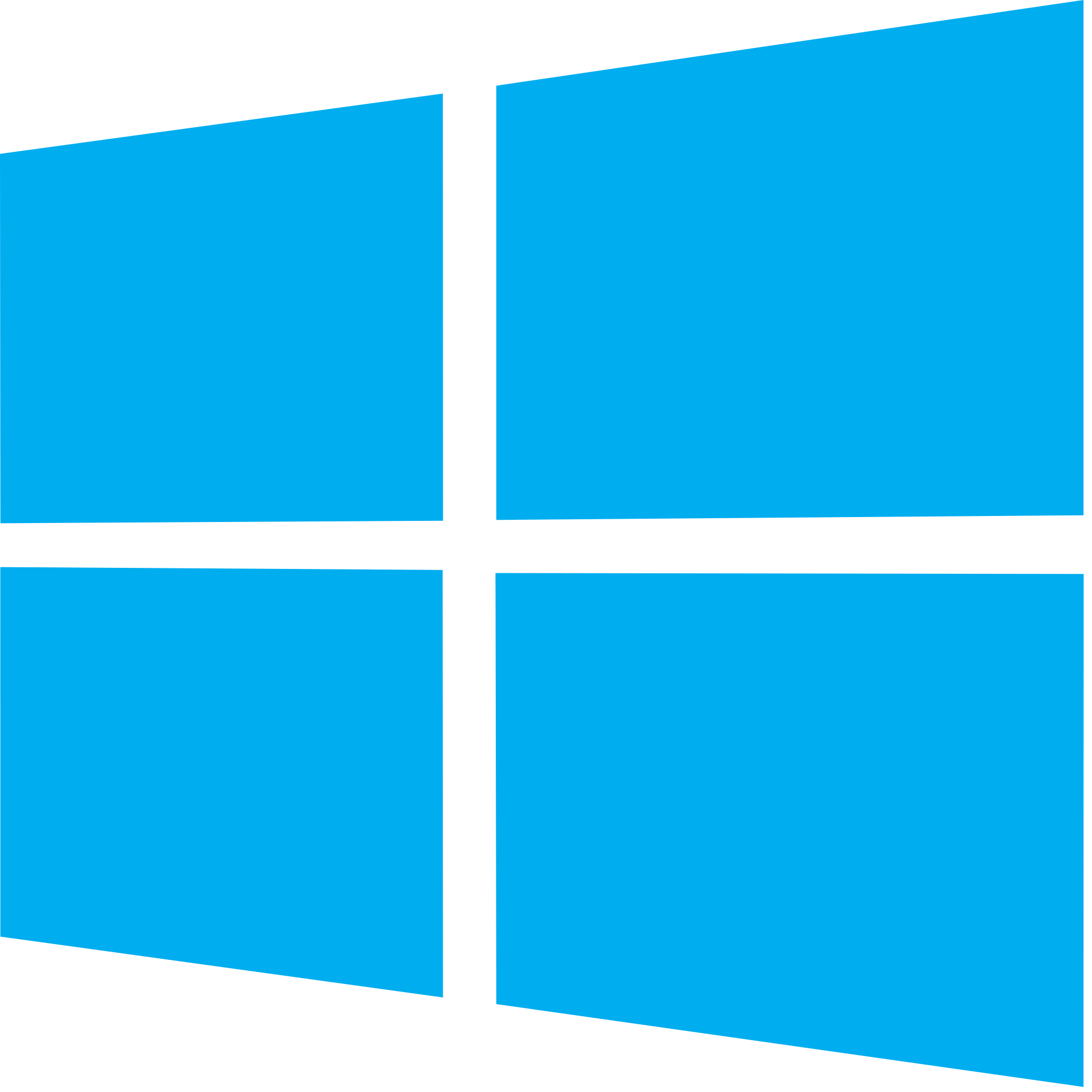 2. For Windows 8, 8.1 and 10.
2. For Windows 8, 8.1 and 10.

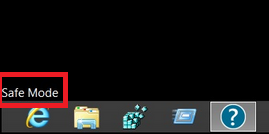
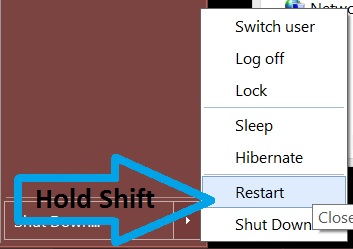
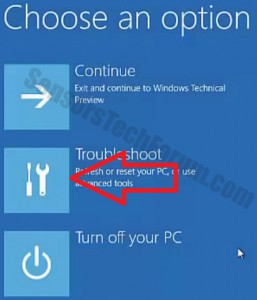
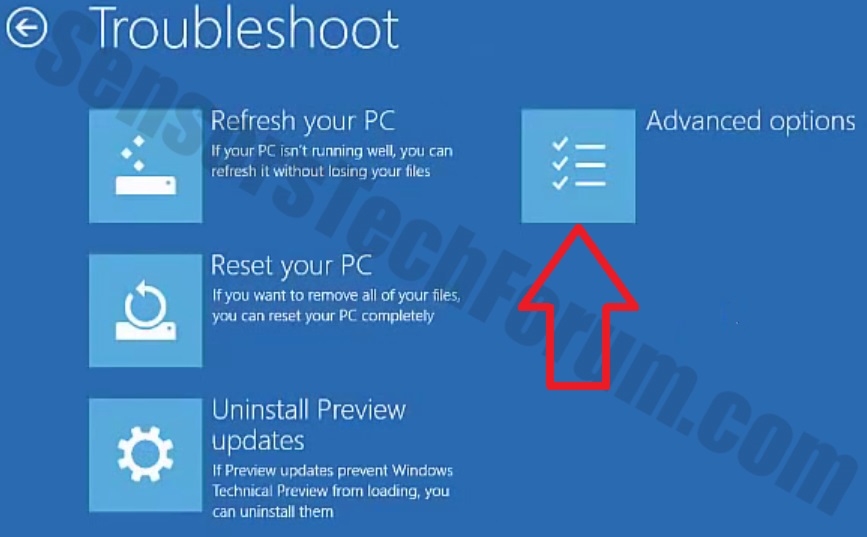

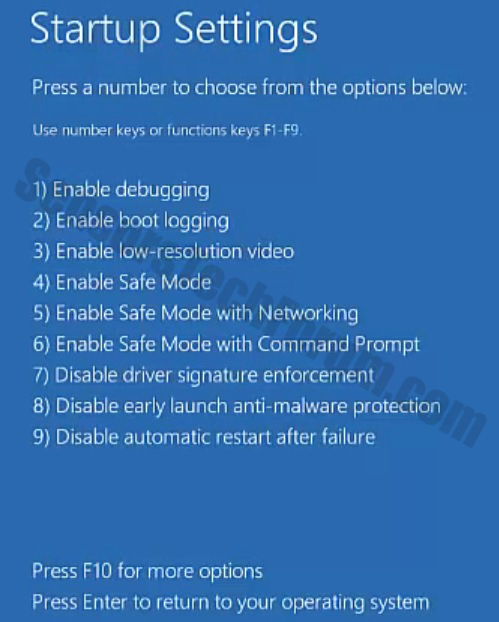
 1. Install SpyHunter to scan for and remove TeslaCrypt 4.0.
1. Install SpyHunter to scan for and remove TeslaCrypt 4.0.
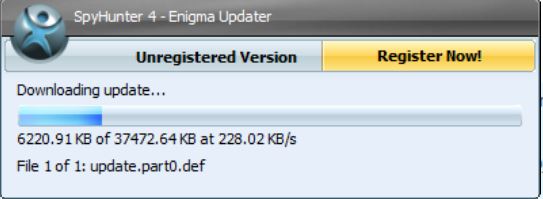

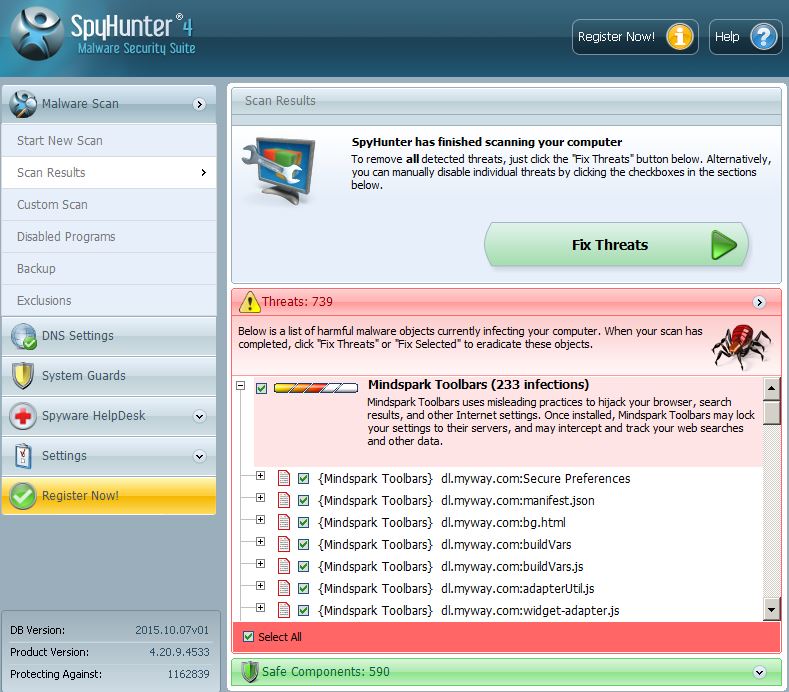
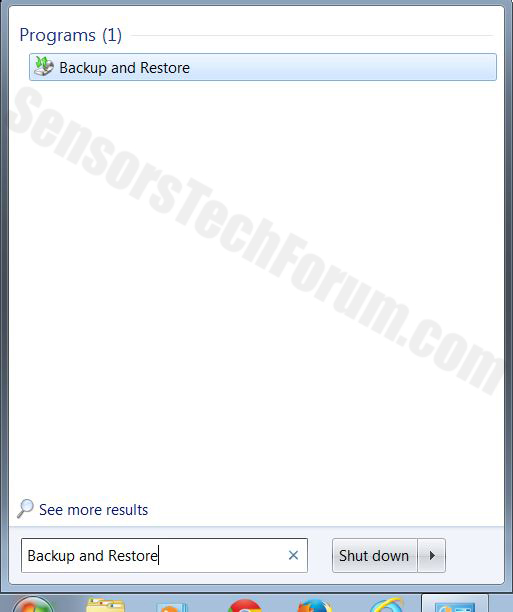
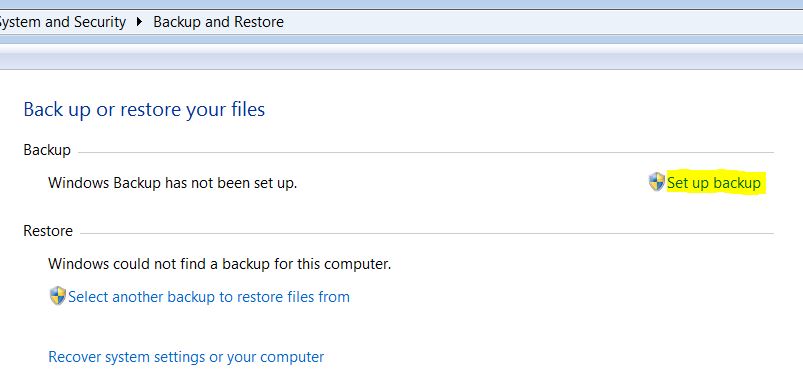
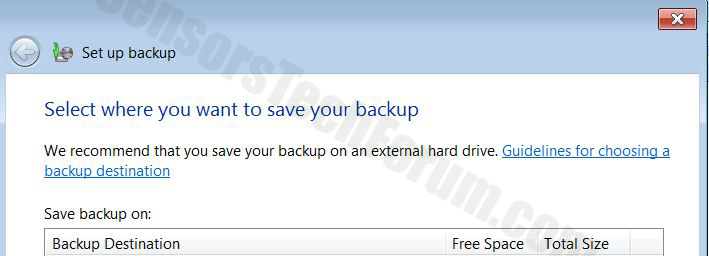
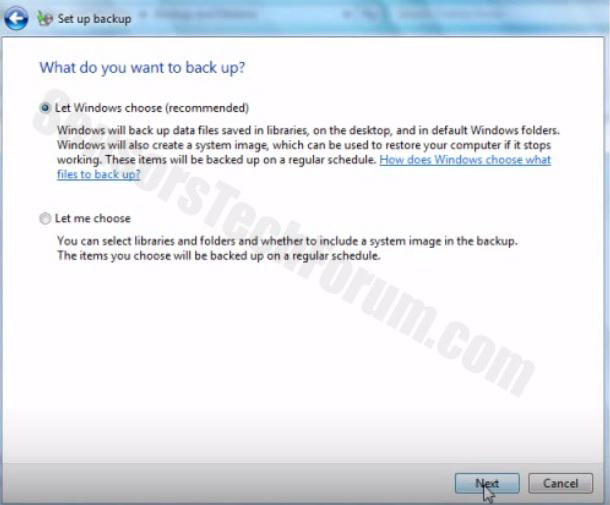
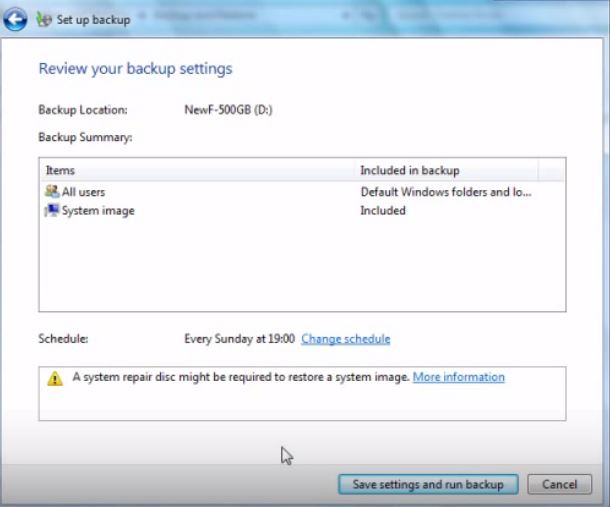

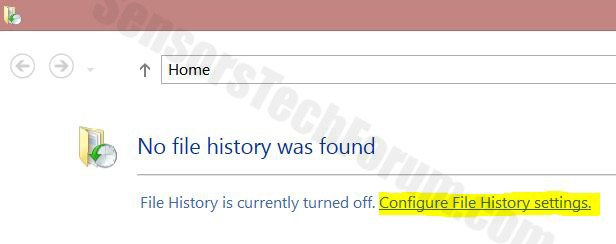
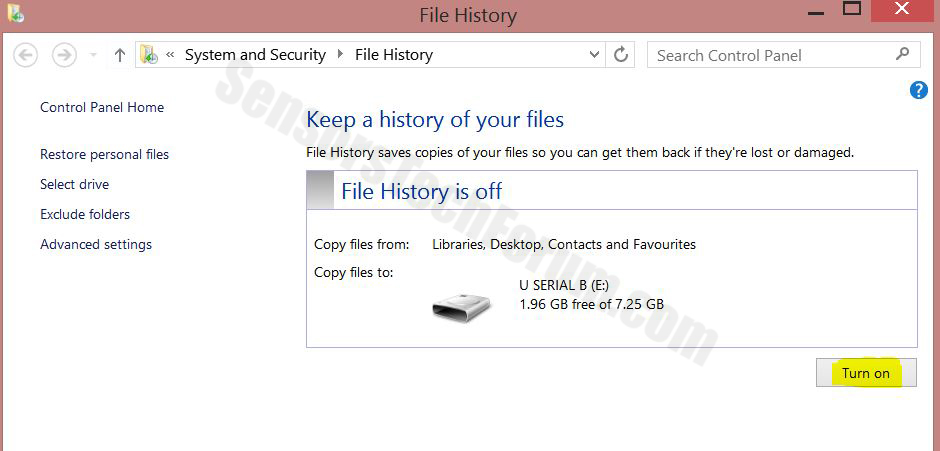



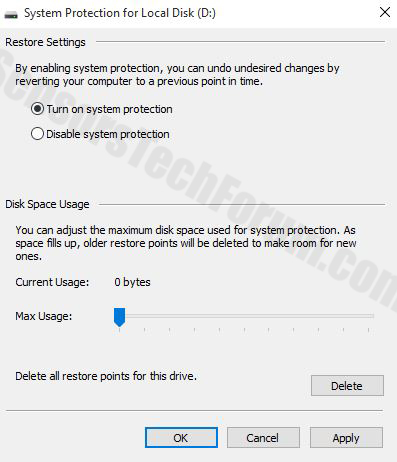
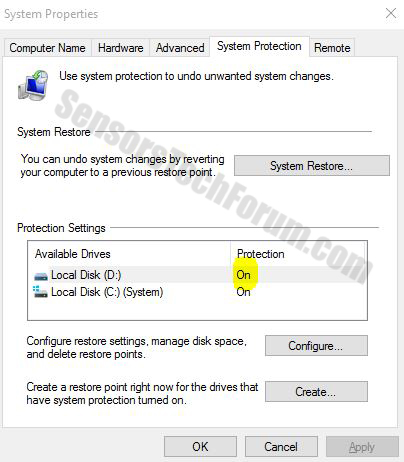
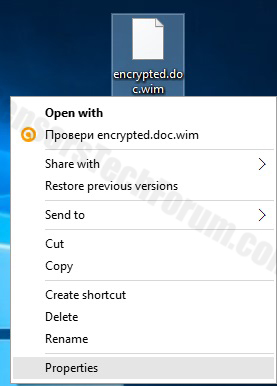
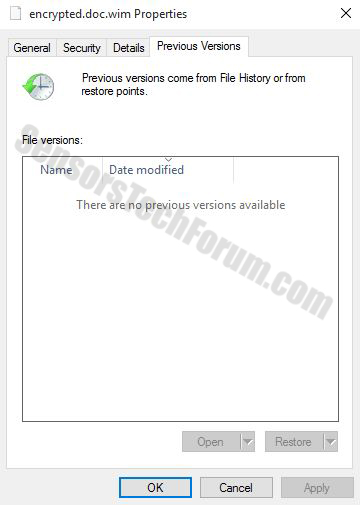
 STOPZilla Anti Malware
STOPZilla Anti Malware
